Are Self-Cleaning Ovens Safe? 4 Reasons to Stop Using Self-Cleaning Oven
In this article…
- How Self-Cleaning Ovens Work
- How Often Should It Be Run?
- Major Parts Damage
- Dangerous Smoke, Odours and Carbon Monoxide
- Family Safety
- Fire Hazard
- Manual Cleaning Tips
- Contact Pros at Fix Appliances CA
When discussing daily chores, tasks such as ironing, dishwashing, and cleaning the oven or range are often despised. Therefore, when purchasing a new oven, the aim is to avoid routine tasks like cleaning. You’re enthusiastic and prepared to bid farewell to days filled with the scent of strong, cleaner fumes and strenuous scrubbing. Now, get ready to welcome a sparkling clean oven with just a touch of a button.
However, while oven manufacturers are incorporating fantastic features to tackle such undesirable household tasks, the latest self-cleaning options can pose significant problems for your home appliance. The primary question our experts will address is, “Are self-cleaning ovens safe?” In brief response to this question, self-cleaning ovens are generally safe, although there are factors to consider. They subject major components to extreme temperatures, potentially causing damage, and may emit hazardous smoke, odours, and carbon monoxide during cleaning. Ensuring family safety involves keeping children and pets away and avoiding prolonged exposure to smoke. Additionally, fire hazards may occur if flammable materials are not removed beforehand. While convenient, self-cleaning ovens require careful handling and maintenance to minimize risks.
Remarkably, FIX Appliance CA technicians face self-cleaning issues in approximately 50% of all repair requests. Contact us, and you are certain to avoid major problems with your oven. That is why we’d like to analyze the process and the potential undesirable consequences you may encounter.
How Self-Cleaning Ovens Work
Before delving into the details of an oven’s self-cleaning function, let’s first understand what a self-cleaning oven is and how it functions.
What is a self-cleaning oven?
A self-cleaning oven is a feature found in many contemporary ovens. It is designed to incinerate cooking spills and splatters at an exceptionally high temperature (932°F or 500°C) to facilitate cleaning. This cycle typically spans several hours, and for safety reasons, it automatically closes the oven door until it has adequately cooled.
These ovens often boast enhanced cooking efficiency and feature additional insulation to withstand the elevated temperature required during the self-cleaning process.
Most reputable manufacturers offer the self-cleaning oven feature, including:
| Blomberg | Bertazzoni | Bosch |
| DCS Fisher & Paykel | GE | Electrolux |
| Frigidaire | Fulgor Milano | Jenn-Air |
| KitchenAid | Kenmore | LG |
| Panasonic | Maytag | Viking |
| Whirlpool | Wolf | Samsung and more |
Each has a variety of sidewall coatings made from heat- and acid-resistant porcelain enamel. As temperatures inside the oven increase, any leftover food particles will be burnt to ash.
Step 1—Empty it out
Before initiating the cycle, ensure that you empty the oven completely. Remove all racks, pots and pans, cookie sheets, aluminum foil, or any other items stored inside. Chemical oven cleaners are unnecessary for the internal surfaces, but you might need a robust oven cleaner for the racks when washing them in the sink. Racks left inside during the cleaning cycle may appear dull afterward; you can restore the sheen with vegetable oil.
Step 2—Lock her down
Once the stove is emptied, activate the locking door system. While there is a manual locking mechanism, it’s advisable to use the automatic system, which engages with an electric motor and switches. This mandatory latch serves as a crucial safety feature, preventing accidental injuries and burns.
Step 3—Press the button
Before commencing the process, be aware that the cycle will take approximately three to four hours. Never use this feature when the home is unattended; the intense heat required to burn off residues can produce smoke that may trigger your smoke detector. All heat elements will be activated, and the oven temperature can exceed 1292°F or 700°C, much higher than cooking temperatures. It’s recommended to open a window slightly to cool the room and run an exhaust fan to reduce smoke and odours.
Step 4—Be patient
A safety feature involves a mechanical interlock to keep the oven door closed and locked until the temperature inside reaches approximately 572°F or 300°C. This is set to prevent potential burn injuries, and the latch won’t unlock until the oven completes both the clean and cool-down phases. Once it reaches the right temperature, it will automatically unlock.
Step 5—Wipe it down
Even after the door unlocks, wait a few more hours for the oven to cool sufficiently before wiping down the inside. Remove ash residue with a sponge or damp cloth. Areas around the seals and door edge may need more thorough hand cleaning with hydrogen peroxide, as the self-cleaning may not cover these areas.
How Often Should It Be Run?
Manufacturers offer conflicting advice on how often the self-cleaning feature should be used. Some recommend a monthly cycle to prevent heavy build-up, while others suggest limiting use to a maximum of six times per year to conserve energy and minimize appliance wear and tear. Always adhere to the manufacturer’s recommendations for your specific appliance. This is where things can become a bit challenging.
Is it worth having a self-cleaning oven?
Let’s examine the advantages:
- The primary appeal of a self-cleaning oven is convenience. You can skip using harsh oven cleaners or manually scrubbing spills and burnt food. Instead, you can use the three to four hours of the self-cleaning cycle to engage in other chores or more enjoyable activities.
- Energy Savings – A self-cleaning oven has extra-heavy insulation to achieve high cleaning temperatures. This reduces heat loss during regular cooking, leading to more efficient energy use. Running the self-cleaning cycle immediately after cooking helps minimize the energy required to reach the maximum temperature.
- Cost—Appliance manufacturers argue that the convenience and time-saving benefits of a self-cleaning oven justify the additional cost of purchasing one. They also claim that the energy savings during cooking (thanks to extra insulation) and eliminating the need for expensive chemical cleaners balance out the initial expense.
The big reveal.
Are self-cleaning ovens safe? Having explored what self-cleaning ovens are designed to do, let’s now delve into this feature’s potential negative impacts and hazards.
1. Major Parts Damage
The exceedingly high temperature required for the self-cleaning cycle can significantly compromise major components of your oven.
Locking mechanism
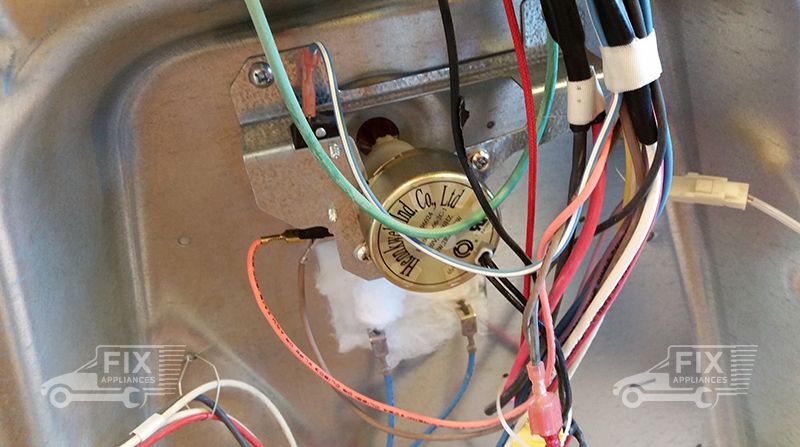
This assembly is supposed to lock and unlock automatically after completing the cycle. It’s common for this to malfunction and get stuck in the locked position. This will require a service call and part replacement.
Thermostat/Thermal fuses
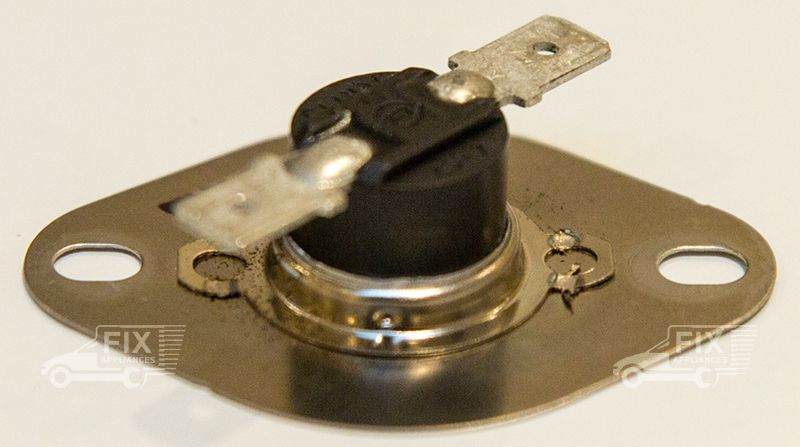
This assembly is supposed to lock and unlock automatically after completing the cycle. It’s common for this to malfunction and gets stuck in the locked position. This will require a service call and part replacement.
Electronic boards/Touch panels
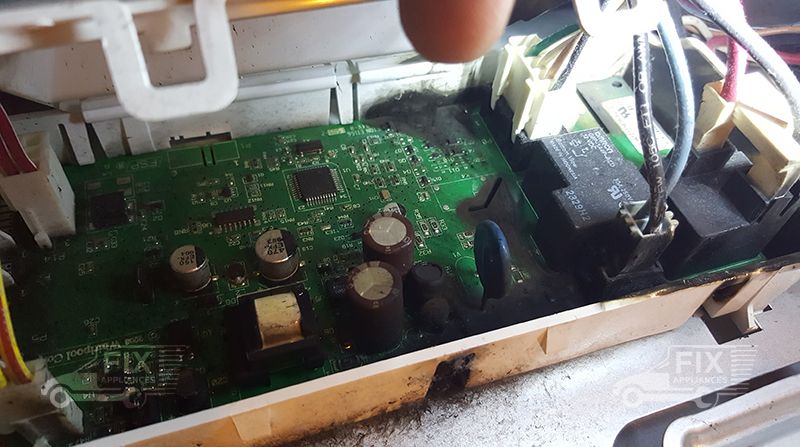
Known as “the brain,” these control units collaborate to ensure your oven responds to your commands. Positioned atop the oven, these components are susceptible to the intense heat generated during self-cleaning. You may encounter error codes, the oven spontaneously turning on and off, or a complete shutdown. Replacing these parts is expensive and demands the expertise of an appliance technician.
Wires and contact terminals
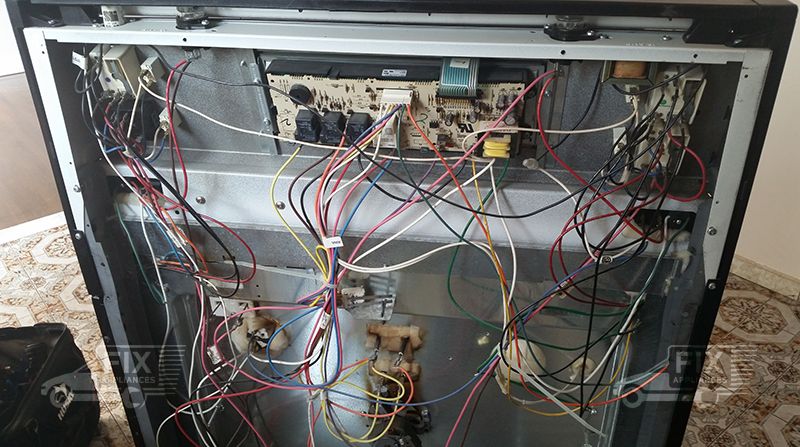
A complex network of wires and connectors distributes electricity to all parts of your stove. Although they are normally covered with thermal insulation to shield them from the heat of regular cooking, the prolonged and extreme temperatures required for the self-cleaning mode may melt the insulation and damage the wiring. Identifying the exact problem area might entail multiple visits and extensive troubleshooting.
Miscellaneous interior components
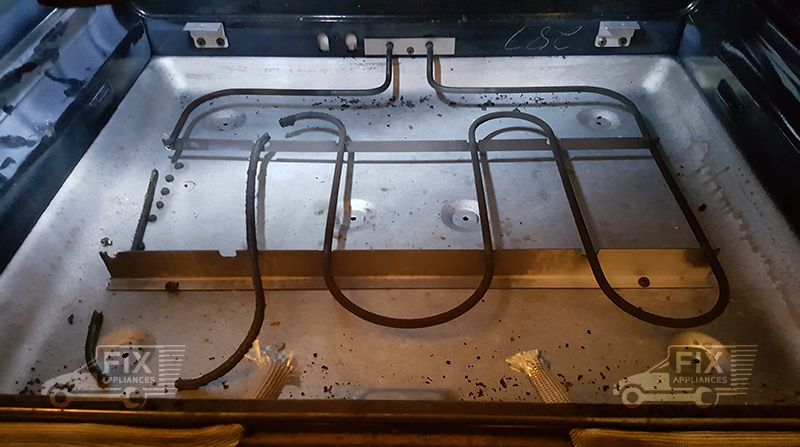
Every component, from the light bulbs and glass housings to thermal sensors and the enamel inside your oven, may sustain damage from self-cleaning. While these parts might not malfunction immediately, recurrent applications compromise every element within your oven.
If your oven displays an error code during or shortly after using the cleaning mode, it is likely linked to the process. Refer to your owner’s manual to identify the error code and contact FIX Appliances CA for a prompt service call. Below is a concise table of error codes for Whirlpool, Maytag, Frigidaire, Electrolux, GE (General Electric), Ikea, and Kenmore range stoves:
| Errors – Locking mechanism | Errors – Electronic Oven Controls (EOC) |
|---|---|
| F5 – E1 | F1 – E0 |
| F5 – E2 | F1 – E1 |
| F5 – E3 | F1 – E2 |
| F5 – E4 | F1 – E4 |
| F5 – E5 | F0 |
| F5 – E6 | F1 |
| F9 | F2 |
| Errors – Locking mechanism | Errors – Electronic Oven Controls (EOC) |
|---|---|
| F90 | F10 |
| F95 | F11 |
| F8 | F12 |
| F9 | F13 |
| Errors – Locking mechanism | Errors – Electronic Oven Controls (EOC) |
|---|---|
| FC | FF or FFF |
| F0 or F1 or F2 |
2. Hazardous Smoke, Odours, and Carbon Monoxide
Neglecting to clear larger pieces of food debris or liquid from your oven before activating the self-cleaning feature can result in excessive smoke and unpleasant odours. Moreover, these remnants may not break down into ashes but instead bake on even more resiliently. Sugary foods and spills have the potential to generate enough smoke to trigger fire alarms or cause eye and respiratory issues.
To make matters worse, a North Iowa Municipal Electric Cooperative Association study revealed that carbon monoxide is produced when food residue is burned during the self-cleaning cycle. This colourless, tasteless, and invisible poisonous gas is responsible for numerous injuries and deaths each year. Opening windows and operating an exhaust fan to disperse gas fumes during cleaning is essential. Having a functional carbon monoxide detector in your home is advisable, as there is no way to eliminate carbon monoxide emissions when using this function.
3. Family Safety
Children and pets are at a significant risk of burns as the oven’s exterior becomes extremely hot, so leaving kids or animals unattended in the kitchen during cleaning is not recommended.
Toxic fumes released from the smoke cloud can also pose a threat to individuals with asthma or respiratory diseases. The Teflon coating inside your oven can break down when exposed to high temperatures, and inhaling the fumes can lead to breathing issues, coughing, sweating, chills, and flu-like symptoms.
Animals, especially birds, are also vulnerable to smoke and fumes. Birds require large amounts of oxygen to maintain their flight muscles, and the toxicity in the off-gases can quickly permeate their bodies, potentially leading to death.
Ventilating the kitchen is insufficient to protect your family or animals from breathing in harmful fumes. If you use your oven’s self-cleaning feature, ensure family members (including children) and animals are as far away from the room as possible during the process.
4. Fire Hazard
Last but certainly not least, the self-cleaning feature can pose a fire hazard. Even if you’ve eliminated all the larger food particles, there are likely grease or cooking oil splatters and spills to burn off. With an inside temperature exceeding 500° C and a flashpoint (the temperature at which items can self-combust without an ignition source) ranging between 750 to 815°F° or 400 to 435° C, leftover pepperoni grease, for instance, can ignite.
A piece of advice: In the event of a fire during the clean cycle, refrain from attempting to extinguish it. Even if the oven has cooled enough for the door to open, doing so will introduce oxygen, potentially fueling the flames. If the fire is extensive, evacuate the house and dial 911.
So, what now? Are self-cleaning ovens safe for you and your family? The decision lies with each customer.
After weighing all the pros and cons of using your oven’s self-cleaning feature, you might be curious about alternative methods to safely remove grease and grime.
Manual Cleaning Tips
Nobody eagerly anticipates the task of oven cleaning, yet ovens possess the uncanny ability to transform into a culinary crime scene in no time. It’s crucial to remember that a relatively clean oven contributes to tastier food and promotes a germ-free environment. It’s wise, and we recommend, to spot-clean throughout the month. Let’s delve into the most popular cleaning methods.
Organic Cleaning Method
When we talk about natural cleaners, we’re referring to eco-friendly products such as baking soda, white vinegar, lemon juice, dish soap, and cream of tartar. All these can effectively eliminate stubborn food stains without resorting to toxic chemicals. Various recipes for all-natural cleaning involve combining these products to create a paste. Allowing the mixture to sit overnight or baking it at a low temperature for an hour will loosen grime, making it easy to wipe clean with a damp sponge. The beauty of organic oven cleaners is that you don’t need to worry about wearing gloves, and you can use your oven immediately after cleaning with baking soda.
Chemical Cleaning Methods
On the contrary, we strongly advocate caution when using chemicals for oven cleaning. If you’ve ever scrutinized the ingredients on the label of a commercial oven cleaner, you know it reads like a laundry list of chemicals. Conventional oven cleaners contain various chemicals such as potassium hydroxide, monoethanolamine, sodium hydroxide, and butoxydiglycol. These chemicals can irritate your respiratory system and cause skin, lung, and eye burns. While commercial cleaners, usually in spray form, can be quite harsh, they are highly effective at removing debris and grease without extreme temperatures or vigorous scrubbing. Professionals recommend wearing long gloves and avoiding inhaling the fumes. It’s evident that many customers are concerned about using these chemicals around their families, pets, or in an appliance used to cook food.
Hence, as you can see, everyone can choose the best cleaning method suitable for themselves and their family. However, we advise considering the aforementioned issues when making your choice!
New Technologies Recommended
If you’re in the market for a new oven and want to avoid the current self-cleaning options, it is necessary to remember that over the last few years, appliance companies such as Whirlpool and Bosch have improved oven functions and are ready to suggest safer “self-cleaning” technologies:
- Eco Clean Direct Oven from Bosch – includes a ceramic coating on the back wall of the oven (ceiling and side walls can be upgraded) to reduce spills from sticking.
- AquaLift technology from Whirlpool – uses a special coating that activates water and low-temperature heat to remove dirt and debris easily. It is safe, odourless, energy and time-saving.
- Auto-cleaning, also known as “pyrolytic cleaning,” operates by heating the oven’s interior up to 500ºC. During this process, grease is incinerated off the surfaces, and any spills or remnants of dried-on food are transformed into a pile of ash that can be easily swept away.
Prior to purchasing any household appliance, it is advisable to conduct thorough research, considering both the safety and potential consequences of damage. Take the time to watch and read technology descriptions and reviews, pose queries on local forums, or seek advice from local appliance repair experts.
Contact Pros at Fix Appliances CA
While maintaining your oven is a personal choice, it’s crucial to remember that a significant percentage of service calls are linked to failures associated with the self-cleaning feature.
Always consult your owner’s manual for recommendations for using the clean mode on your appliance. Feel confident that FIX Appliances CA will be their appliance installation in Toronto or help problems arise.
Do you have problems with your oven?
Our oven repair experts will properly diagnose and fix your oven or stove. Same-day repair service is available.
Request range, stove, oven, or outdoor kitchen Toronto repair now at toll-free: 888-242-0777
Now, refrigerators in Oshawa, Hamilton, Barrie, and other areas of Southern Ontario can be repaired with same-day service. Please contact our office at 647-503-6655 before noon to check a technician’s availability in your area. We always try to find a free spot on our schedule for your repair.
Date of page creation: July 15, 2021
Page update date: March 30, 2024
Ask a Question
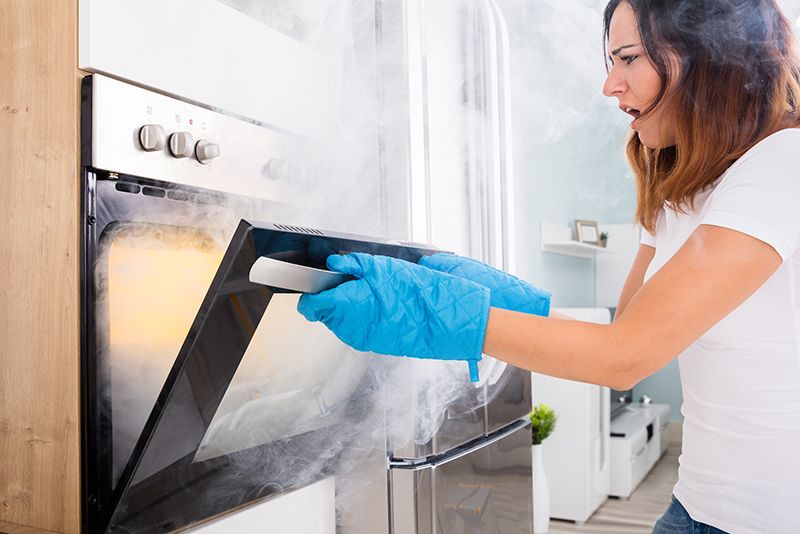
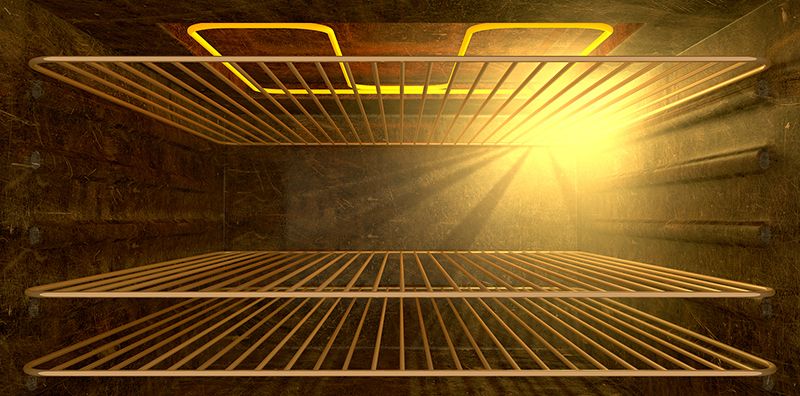



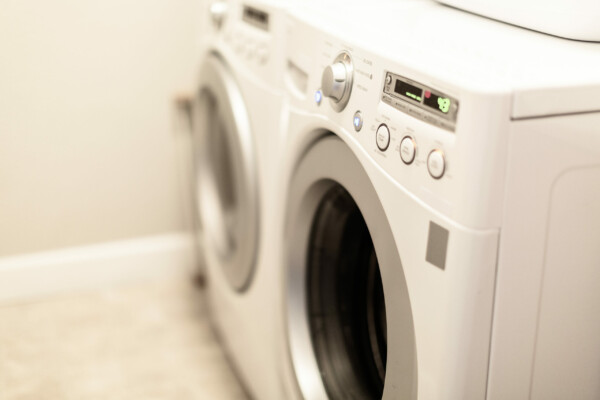

What is steam cleaning?
Hello Catherine Edwards,
As the water turns to steam, it fills the oven cavity. The steam helps to soften and loosen food particles, grease, and other residues that may have accumulated on the oven walls, racks, and other surfaces.
After using self cleaning and wiping away the white ash residue from my oven, I can still see the shape of anywhere there were major spots. I had removed anything that I could scrape off before using self cleaning. Now it is just like the surface isn’t the same all over. Is there any way to treat that?
Hello Lois Bradley,
It sounds like the self-cleaning process may have caused discoloration or unevenness in your oven’s surface. This can happen due to the intense heat and the way the self-cleaning cycle works.
Here are a few steps you can take to try to improve the appearance of your oven’s interior:
It’s essential to be patient and careful when attempting to clean the interior of your oven, as harsh cleaning methods or abrasive materials can damage the surface. Always refer to the manufacturer’s instructions and use appropriate safety precautions.